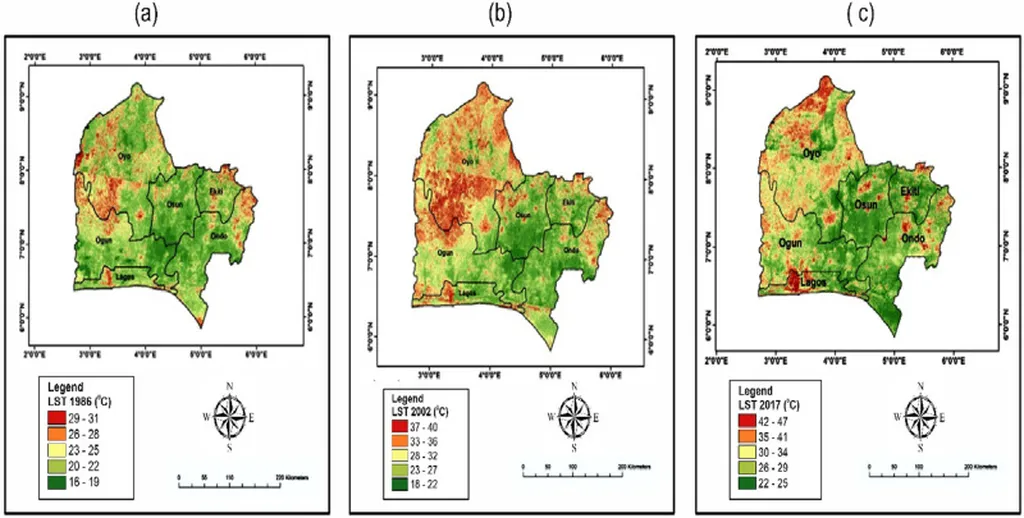In the heart of Nigeria, the city of Osogbo is growing rapidly, and with this urban expansion comes an invisible but significant challenge: the Urban Heat Island (UHI) effect. A recent study published in the African Journal on Land Policy and Geospatial Sciences (translated as “African Journal on Land Policy and Geospatial Sciences”) has quantified this phenomenon, offering crucial insights for urban planners, policymakers, and the energy sector.
Led by Ayodeji Iyanu from Obafemi Awolowo University, the research team utilized advanced remote sensing and GIS techniques to analyze land cover changes and their impact on land surface temperatures in Osogbo over a 20-year period (2003-2023). The study employed a multi-index approach, calculating various indices such as NDVI (Normalized Difference Vegetation Index), NDBI (Normalized Difference Built-up Index), NDWI (Normalized Difference Water Index), and NDBaI (Normalized Difference Bareness Index) to understand the complex interplay between urbanization and temperature.
The results were stark. “We observed a significant increase in built-up areas, replacing natural land covers, which directly correlated with a progressive rise in land surface temperatures,” Iyanu explained. The study found strong negative correlations between land surface temperature and NDVI, highlighting the cooling effect of vegetation. Conversely, robust positive correlations were found between land surface temperature and NDBI, underscoring the warming effect of built-up areas.
Perhaps most notably, the research employed Geographically Weighted Regression (GWR) to reveal spatial heterogeneity in these relationships, pinpointing localized thermal vulnerabilities. This granular understanding is crucial for targeted urban planning and climate adaptation strategies.
For the energy sector, these findings are particularly relevant. As cities like Osogbo continue to grow, the demand for cooling solutions is set to rise, presenting both challenges and opportunities. “Understanding the spatial distribution of urban heat can help energy providers anticipate demand and plan infrastructure accordingly,” Iyanu noted. This could lead to innovative solutions, such as decentralized cooling systems or green infrastructure integration, which could mitigate the UHI effect while also creating new markets.
The study also underscores the importance of integrating climate adaptation into urban planning. By understanding the relationship between land cover changes and temperature increases, cities can make informed decisions that promote sustainability and resilience. This could involve preserving green spaces, implementing green roofs, or adopting cool pavement strategies, all of which can help mitigate the UHI effect.
As rapid urbanization continues to shape cities across Africa and beyond, this research serves as a timely reminder of the need for sustainable and resilient urban planning. By leveraging advanced technologies and data-driven insights, cities can grow in a way that balances development with environmental stewardship. The study, published in the African Journal on Land Policy and Geospatial Sciences, is a significant step in this direction, offering valuable insights that can guide future developments in the field.

